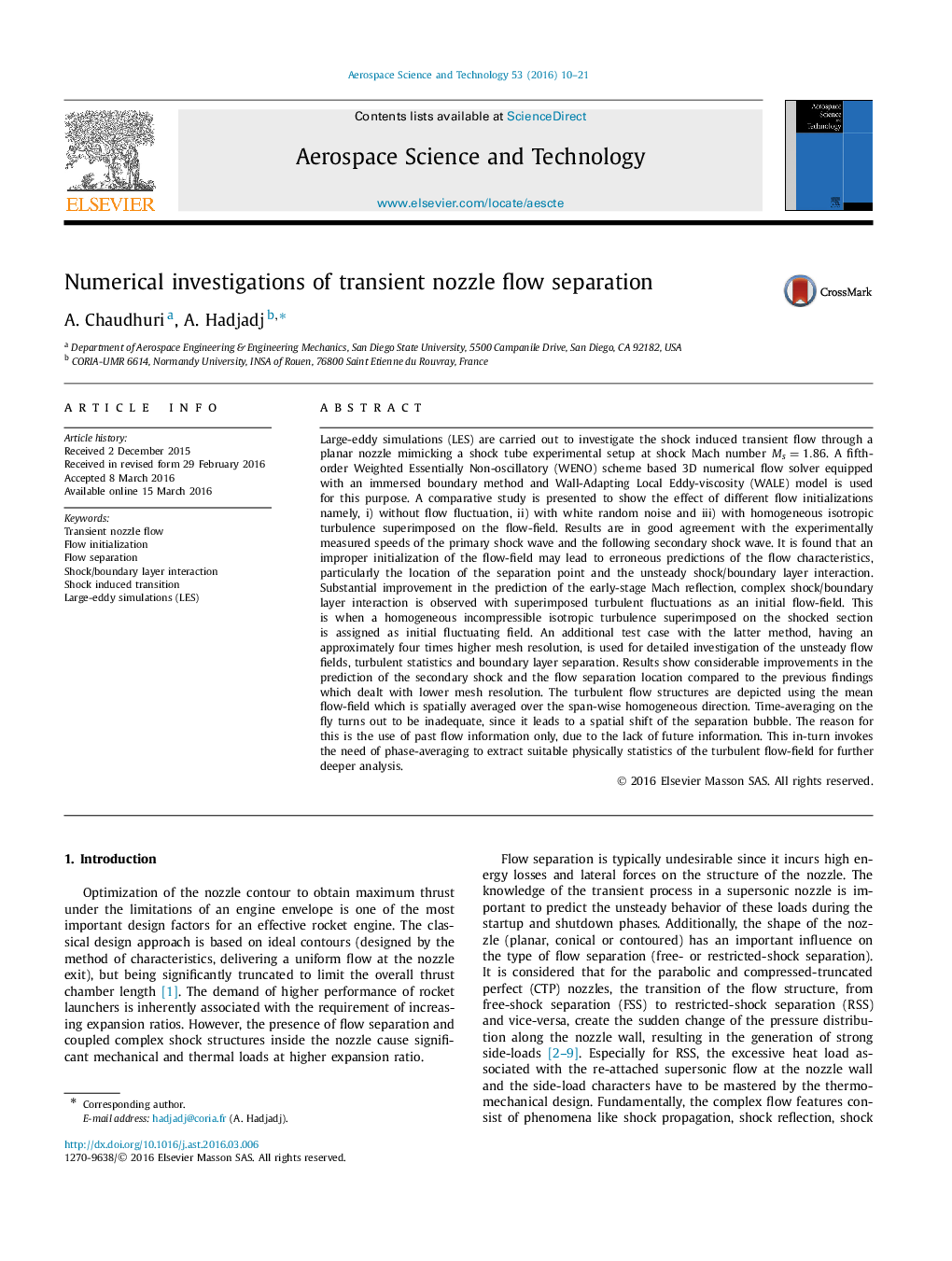| کد مقاله | کد نشریه | سال انتشار | مقاله انگلیسی | نسخه تمام متن |
|---|---|---|---|---|
| 1717664 | 1520081 | 2016 | 12 صفحه PDF | دانلود رایگان |
Large-eddy simulations (LES) are carried out to investigate the shock induced transient flow through a planar nozzle mimicking a shock tube experimental setup at shock Mach number Ms=1.86Ms=1.86. A fifth-order Weighted Essentially Non-oscillatory (WENO) scheme based 3D numerical flow solver equipped with an immersed boundary method and Wall-Adapting Local Eddy-viscosity (WALE) model is used for this purpose. A comparative study is presented to show the effect of different flow initializations namely, i) without flow fluctuation, ii) with white random noise and iii) with homogeneous isotropic turbulence superimposed on the flow-field. Results are in good agreement with the experimentally measured speeds of the primary shock wave and the following secondary shock wave. It is found that an improper initialization of the flow-field may lead to erroneous predictions of the flow characteristics, particularly the location of the separation point and the unsteady shock/boundary layer interaction. Substantial improvement in the prediction of the early-stage Mach reflection, complex shock/boundary layer interaction is observed with superimposed turbulent fluctuations as an initial flow-field. This is when a homogeneous incompressible isotropic turbulence superimposed on the shocked section is assigned as initial fluctuating field. An additional test case with the latter method, having an approximately four times higher mesh resolution, is used for detailed investigation of the unsteady flow fields, turbulent statistics and boundary layer separation. Results show considerable improvements in the prediction of the secondary shock and the flow separation location compared to the previous findings which dealt with lower mesh resolution. The turbulent flow structures are depicted using the mean flow-field which is spatially averaged over the span-wise homogeneous direction. Time-averaging on the fly turns out to be inadequate, since it leads to a spatial shift of the separation bubble. The reason for this is the use of past flow information only, due to the lack of future information. This in-turn invokes the need of phase-averaging to extract suitable physically statistics of the turbulent flow-field for further deeper analysis.
Journal: Aerospace Science and Technology - Volume 53, June 2016, Pages 10–21
